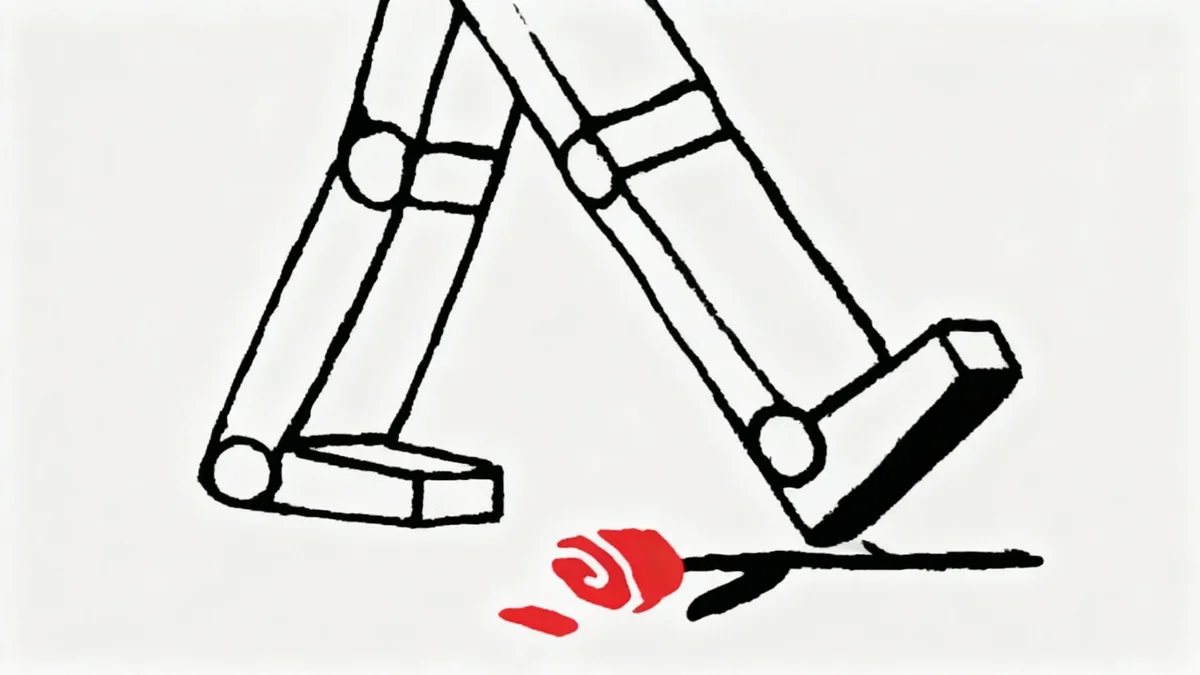In the race to build the next generation of artificial intelligence, a punishing work culture is taking hold. Researchers at the forefront of Large Language Model (LLM) development are reporting workweeks that stretch to 100 hours, driven by immense pressure to innovate in a field where the pace of change is relentless. This intense environment is raising serious questions about the long-term sustainability and the human cost of technological progress.
The drive to stay relevant is creating an atmosphere where personal well-being is often sacrificed for professional survival. As the technological bar constantly rises, the effort required to simply keep up, let alone lead, is pushing many to their mental and physical limits.
Key Takeaways
- Top AI researchers are working extreme hours, with some reporting 100-hour workweeks to remain competitive.
- The pressure stems from a rapidly closing window of opportunity to make a significant impact in the LLM space.
- Experts compare the intensity to elite athletics, but warn that the critical role of rest is often ignored, leading to burnout.
- Effective team culture and proprietary internal tools are becoming more critical for success than simply securing funding or computing power.
- Chronic overwork is seen as a threat to creativity and innovation, leading to narrower problem-solving and technical dead ends.
A Culture of 'Always-On' Innovation
In the high-stakes world of AI development, acronyms like "996"—working 9 a.m. to 9 p.m., six days a week—are becoming commonplace. Some even joke about "997" or "002," a schedule of midnight to midnight with only a two-hour break. While some of this may be social media posturing, the underlying reality is a work culture that demands near-total dedication.
This grueling pace is a direct result of the competitive landscape. The window to be a foundational player in the LLM field is perceived to be closing. As established labs refine their models and build on their successes, the barrier to entry for new players becomes increasingly high. This creates a race where falling behind for even a few months can feel like a permanent setback.
Many top researchers say they work these long hours by choice. The fear of obsolescence is a powerful motivator. The to-do list is endless: one more experiment to run, one more paper to read, one more dataset to secure. This cycle creates an environment where the line between passion and pressure becomes dangerously blurred.
The Rising Bar for Relevance
Two years ago, a small team could make a significant impact by innovating in one specific part of the AI pipeline. Today, the complexity has skyrocketed. Building a model that anyone will actually use requires a highly coordinated, resource-intensive effort across data, training, and post-training stages, making it difficult for newcomers to compete with established frontier labs.
The Elite Athlete Analogy
Some insiders are drawing parallels between working at a top AI lab and training as a Division 1 athlete. Both require singular focus, immense dedication, and the ability to grind through tedious tasks for a distant goal. The margins between success and failure are incredibly slim, and performance is only truly measured a few times a year against top competitors.
However, this analogy highlights a critical, often-ignored component: rest and recovery. While elite athletes understand that rest is essential for peak performance, this wisdom has not fully translated to the AI field.
"Your mental acuity can drop off faster than your physical peak performance does when not rested. Working too hard forces you to take narrower and less creative approaches."
Without adequate downtime, the ability to spot technical dead ends or devise creative solutions diminishes. Burnout doesn't just lead to exhaustion; it leads to less effective work. The very innovation these long hours are meant to foster is put at risk.
Culture, Not Capital, Is the New King
While access to massive computing power and financial capital remains crucial, a new consensus is emerging: a cohesive team culture is the ultimate differentiator. The intricate, sensitive, and complex systems required to build cutting-edge models depend on seamless collaboration and shared knowledge.
The Three Pillars of Success
According to industry experts, the three core ingredients for training state-of-the-art models are:
- Internal Tools: Mature, proprietary codebases and recipes that have been refined over time.
- Resources: Access to vast amounts of compute and high-quality data.
- Personnel: A team with the right experience, led by a clear vision and effective management.
This is why starting a new AI lab today is more challenging than ever. Even with significant funding, a new company cannot instantly replicate the years of accumulated knowledge embedded in an established lab's internal tools and workflows. Culture is notoriously difficult to build and easy to lose, making it a fragile but powerful asset.
The Cognitive Load
The amount of technical context a researcher must hold in their mind to be effective is constantly increasing. Processes that were once managed by a single person now require entire teams. This immense cognitive load pushes out space for hobbies, relaxation, and mental peace, further accelerating the path to burnout.
Post-training pipelines that involved two or three distinct stages just a few years ago now involve numerous checkpoints, model merging, and complex sequencing. This requires a level of system-wide thinking and proactive problem-solving that is mentally taxing day after day.
The Unspoken Question of Sustainability
As the AI industry matures from a sprint to a marathon, the sustainability of its work culture is being called into question. The motivations driving researchers are varied. Some are chasing generational wealth, while others are genuinely driven by the desire to create technology that benefits humanity.
Regardless of the motivation, the human element is emerging as a potential bottleneck. The industry may find its progress limited not by a lack of financial capital, but by a shortage of human capital willing and able to endure the immense strain.
The race for AI supremacy continues, but the well-being of the people running it may determine who ultimately crosses the finish line. The challenge for the industry's leaders is to build cultures that foster both groundbreaking innovation and sustainable careers.





